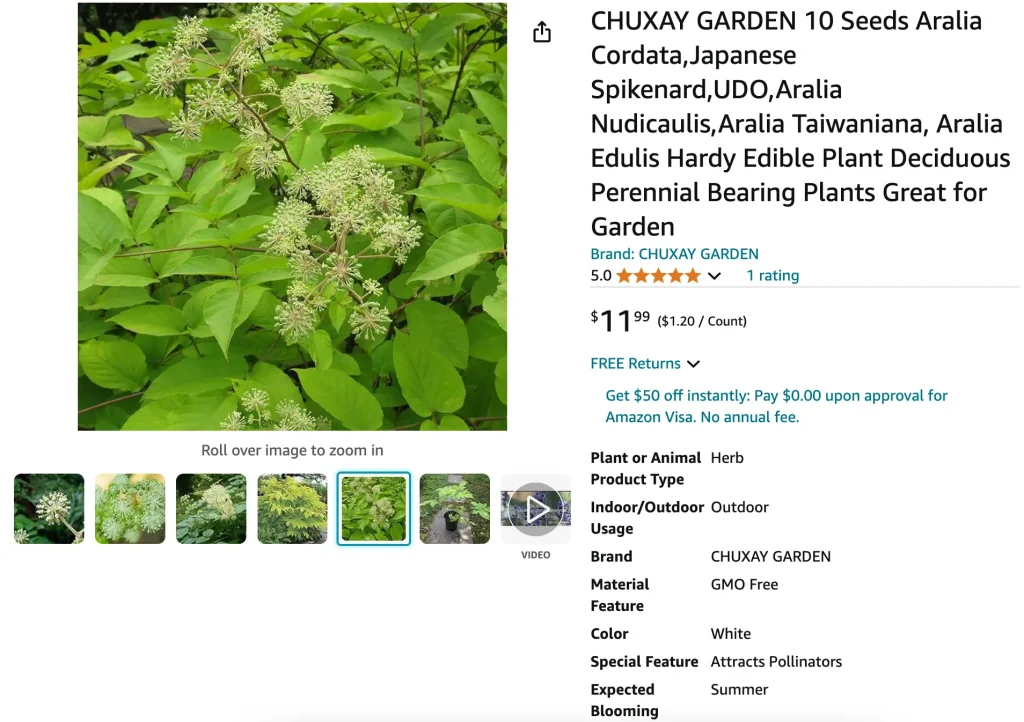
What is Aralia Nudicaulis?
Aralia Nudicaulis, commonly known as the Wild Sarsaparilla, is a fascinating plant with a lot of character. In the world of botany, it’s categorized as a herbaceous perennial. This means it’s not a shrub or a tree but rather a plant that dies back in the winter and regrows from its roots in the spring. Its lush, compound leaves and small, clustered flowers give it a unique appearance that stands out in any garden.
73 Species in Genus Aralia
Is Aralia Nudicaulis an Herb or Shrub?
Contrary to what some might assume, Aralia Nudicaulis is indeed an herb, not a shrub. It’s a member of the Araliaceae family and is known for its low-growing, herbaceous nature. This means it doesn’t develop woody stems or branches like shrubs do. Instead, it thrives through its underground rhizomes, which help it spread and establish itself in a variety of environments.
Is Aralia Nudicaulis Sassafras?
No, Aralia Nudicaulis is not sassafras. While both plants may share similar habitat preferences and have a somewhat similar appearance, they belong to different plant families. Sassafras (Sassafras albidum) is a tree or large shrub in the Lauraceae family, known for its aromatic leaves and distinctive, mitten-shaped leaves. In contrast, Aralia Nudicaulis is part of the Araliaceae family and has its own unique characteristics.
What Country Does Aralia Nudicaulis Come From?
Aralia Nudicaulis is native to North America. It can be found in a variety of regions across the United States and Canada. Its preferred habitats include shaded woodlands, forests, and areas with moist, well-drained soil. This hardy plant is well-adapted to the cooler climates of these regions, making it a great choice for gardeners in similar environments.
What Type of Plant is Aralia Nudicaulis?
As mentioned earlier, Aralia Nudicaulis is a herbaceous perennial. It’s known for its distinctive foliage and interesting flower clusters. The plant typically grows to about 1-2 feet in height and spreads outwards through its rhizomes. It’s particularly valued in landscaping for its ability to thrive in shade and its attractive, ornamental qualities.
How to Care for Aralia Nudicaulis?
Caring for Aralia Nudicaulis is relatively straightforward. It prefers shady or partly shady areas, making it an excellent choice for woodland gardens. The soil should be moist but well-drained. While it can tolerate a variety of soil types, it does best in rich, organic soils. Regular watering is essential, especially during dry spells, but be cautious not to overwater. Mulching can help retain soil moisture and keep weeds at bay.
How to Propagate Aralia Nudicaulis?
Propagating Aralia Nudicaulis is usually done through division of its rhizomes. In early spring or late fall, carefully dig up the plant and separate the rhizomes, ensuring each section has some roots attached. Replant the divisions in well-prepared soil. This method is effective for expanding your garden or sharing the plant with friends.
What to Plant With Aralia Nudicaulis?
Aralia Nudicaulis pairs well with other shade-loving plants. Consider planting it alongside ferns, hostas, or caladiums to create a lush, green underlayer in shaded garden areas. Its delicate foliage complements the broader leaves and textures of these companions, enhancing the overall aesthetic of your garden.
Can You Grow Aralia Nudicaulis Indoors?
While Aralia Nudicaulis is primarily an outdoor plant, it can be grown indoors under the right conditions. It will need a cool, well-lit area, ideally with indirect sunlight. Ensure it has sufficient humidity and keep the soil consistently moist but not waterlogged. Indoor growth can be a bit challenging due to its preference for cooler temperatures and specific light conditions.
Is Aralia Nudicaulis Toxic?
Aralia Nudicaulis is generally considered non-toxic to humans and pets. However, as with many plants, it’s wise to avoid ingesting any part of it. Always keep an eye on pets and small children to prevent any accidental ingestion, and consult a professional if you suspect any adverse reactions.
Benefits of Aralia Nudicaulis
Aside from its ornamental value, Aralia Nudicaulis has been used traditionally in herbal medicine. Its rhizomes were once used to treat various ailments, though modern use is less common. In the garden, its ability to thrive in shade and its attractive foliage make it a valuable addition to shaded or woodland garden designs.
Common Problems with Aralia Nudicaulis
One common issue with Aralia Nudicaulis is its susceptibility to root rot if planted in poorly drained soil. Ensure the planting area has good drainage and avoid overwatering. Additionally, like many shade plants, it can be prone to pests like slugs and snails, which may nibble on its leaves. Regular checks and natural pest control methods can help manage these issues.
Comparing Aralia Nudicaulis with Similar Plants
When comparing Aralia Nudicaulis with other shade-loving perennials like hostas or ferns, its unique rhizomatous growth and compound leaves stand out. Unlike ferns, which spread through spores, Aralia Nudicaulis spreads through its rhizomes, offering a different approach to ground cover in shaded areas.
In summary, Aralia Nudicaulis is a versatile and attractive herbaceous perennial that adds interest and texture to shaded garden areas. Its ease of care and adaptability make it a great choice for gardeners looking to enhance their woodland or shade gardens.
If i die, water my plants!



